
Pasture Management: Effective Planning & Implementation
Pasture management is key to grazing because livestock productivity during the season depends on pasture efficiency. It depends on many factors: quality and quantity of forage, grazing, natural conditions, etc. Competent pasture management systems help to optimize the complex process. In this article, we explain what this practice means, what characteristics it has to offer, and how to make it as effective as possible.
What Is Pasture Management?
Pasture management is a practice for profitable livestock production providing the animals with forage grasses and legumes and keeping the soil healthy. It defines strategies to improve grass health and forage production, maintain a healthy ecosystem, and reduce production costs. Success depends on knowing how all the elements are interconnected. For example, cattle grazing in pasture affects the growth of grass, which in turn affects the number of weeds. Water flow for farm production affects the environment and animal health. Thus, pasture improvement depends on the effective control of each aspect.
Why Is Pasture Management Important?
The importance of pasture management is that it improves the health and sustainability of the ecosystem. At the same time, a poorly organized system causes weed invasions, slows the recovery of forage grass, and reduces quality. Pasture renewal may solve these problems temporarily, but for the long-term development of the farm, it is much more effective to optimize grassland management practices.
How To Benefit From Pasture Management
A sound strategy ensures better farm profitability, ecosystem, and animal health. Here are just several advantages of well-organized pasture maintenance:
- reduced weeds;
- enhanced soil drainage;
- improved water quality;
- good distribution of nutrients (manure);
- decreasing the use of supplementary nutrition (silage and hay).
Overall, pasture care and maintenance are very beneficial economically. This practice reduces labor costs, strengthens the soil tilth, reduces erosion risk, and gives an economical feed source. Moreover, grazing provides the physical exercise necessary for the animals’ health.
At the same time, pasture management should be a permanent process. It is the only way farmers can maintain the area’s optimal condition. For example, there is always the risk of overdevelopment of forage grass. Consequently, grazings accumulate too much water, which reduces the amount of fiber and deteriorates the quality of livestock nutrition. Grassland maintenance implies regular monitoring and timely eradication of noxious plants, as well as forecasting weather changes to avoid negative consequences. The problems of pasture management contain the complexity of organizing the process: it requires careful planning, usually a year in advance . However, such a system’s advantages are indeed more significant.
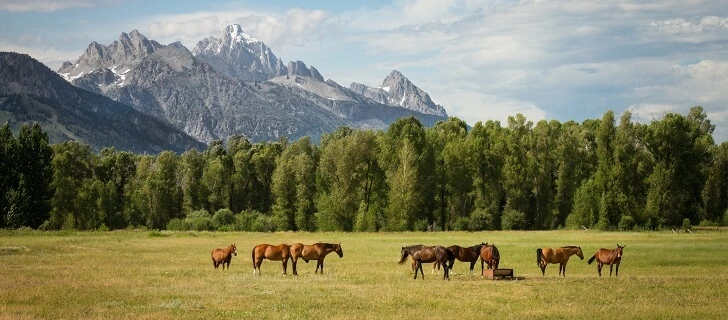
Pasture Management Plan Importance
A grazing plan is the first you need to establish pasture care management. It identifies solidities and frailties in the system so adjustments can be made in time. Furthermore, with a good plan, farmers can better use limited resources, primarily forage grass. The results of the implemented plan allow them to think about the following year’s strategy.
A pasture management plan requires mapping software. Farmers draw the field’s borders to be grazed on it. Such a map allows for better monitoring of grassland conditions and adjusting activities to changing conditions. When mapping, it is necessary to divide the area into a land that is owned and leased, for which not all pasture management methods are suitable. It is also essential to determine acres in use. These steps will allow you to detect the presence of additional lots for grazing, for example, by converting arable land to pasture.
Pasture Management By Season
Grassland control should vary according to the seasons, ensuring optimal forage quality. Each season offers unique opportunities for grassland improvement.
Winter Grassland Managing
Winter is the soundest time to create a cattle grazing management plan. With the help of a farm map, owners can calculate the price of the coming season’s activities and design grasslands.
Grazing at this time of year is dangerous, as animals can destroy perennial plants and damage soil cover, which will slow the spring recovery of the area. The best option is to designate a separate winter grazing area. Also, manure treatment should be avoided, as there are simply no plants that absorb nutrients during this period. All this again proves that cattle pasture improvement measures should be carried out throughout the year, including winter.
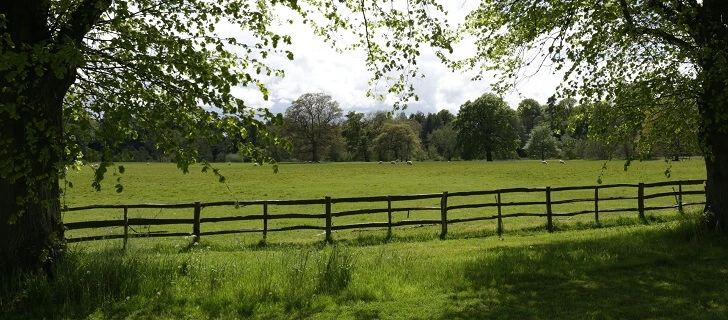
Spring Pasture Management
At first glance, pastures recovering from the spring rains seem suitable for grazing, but they are not. The land still needs time, so continue feeding hay to cattle if possible and conduct the following pasture management preventative measures.
Check Soil Fertility
Spring and fall analysis of soil fertility allows you to determine the best solutions for fertilizing. Comparing the results of monitoring both periods is incredibly effective.
Soil Nutrient Control
The most critical farm pasture management step is pH control. It ensures the stable growth of forage grasses and clover, alfalfa, and other legumes. You can also apply lime: this is usually done in the fall, but the period of this practice can vary depending on weather conditions.
Weed Control And Forage Managing
Spring is a time for many weeds to emerge. So it is essential to identify and kill them in time. Note that some weeds are more effectively sprayed. In this case, choose herbicides for pasture weed control with special care. Such chemicals may include restrictions on grazing and reseeding.
Grazing Management
Grassland productivity is highly dependent on the quality of animal grazing. The optimum height allows the plants to compete with weeds and stay healthy in the summertime. Also, with spring grazing management, farmers can distribute manure evenly over the entire area, controlling grazing.
The best time to start grazing is when the grasses reach 8 to 10 inches. When their height is down to 4 inches, cattle should be moved to another location.
Summer Pasture Management
Summer is an excellent time to analyze grazing conditions. Nitrogen fertilizer can be added as needed to encourage plant growth. The key is to control the amount of such fertilizer according to rainfall. If you did not add lime and other substances in the spring, you could also do this in the summer. At this time of year, it is almost impossible to fight weeds: the only way is to mow them. However, you can analyze them to take action next season, including thinking about herbicide pasture management.
Fall Pasture Management
Weed pressure is reduced in early fall, so autumn grassland management is appropriate for overseeding cold-season grasses. In September, they can be treated with nitrogen (about 40-50) for better growth. Most importantly, make sure the chemicals are washed away by the rain before releasing the animals to feed.
Pasture Management Practices
There are various grazing strategies, each with benefits and drawbacks. For example, it can be the continuous use of a particular area for an extended period. In this case, there is a risk of undergrazing or overgrazing. In turn, a rotational pasture management system using rotation (first of all intensive) on small plots allows plants to recover, prolonging the grazing season. Let’s take a closer look at each example.
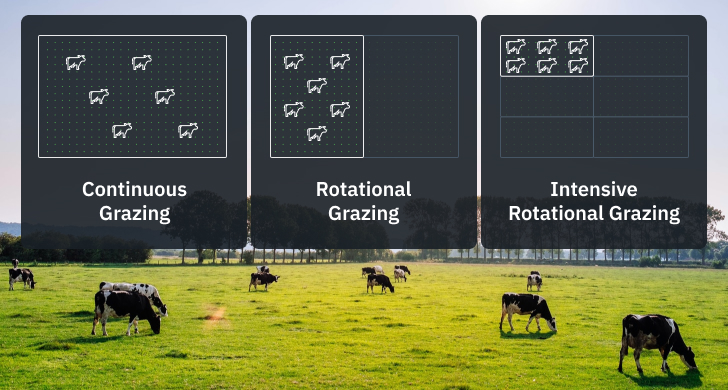
Continuous Grazing
This system involves the use of one field for an entire season. The main advantage of this pasture grazing management is the ease of managing and minimization of overhead costs. At the same time, this system does not ensure optimal use of grazing and manure distribution. Also, the forage quality decreases because farmers have no control over which plants the animals consume.
Rotational Grazing
The rotational pasture management strategy uses several fields for grazing livestock. Its main advantage is the ability to increase the production of forage vegetation and extend the grazing season. Farmers can also distribute manure over the entire area by moving the animals. At the same time, rotational grazing management requires additional costs, for example, fencing.
Intensive Rotational Grazing
With this system, farmers break up the field into multiple paddocks. In addition to the previous model’s benefits, it dramatically lowers the need for mechanical forage harvesting. Moreover, this system provides the highest production among all types of pasture management because the animals consume much more feed per acre. However, this system requires detailed monitoring and more costs at the beginning. Still, this model offers the most benefits in the long term.
EOSDA Crop Monitoring
Using satellite monitoring for remote fields management in one platform!
Pasture Management Using Satellite Remote Sensing
Satellite technology can significantly facilitate the control of areas, first of all, huge ones. With the EOSDA Crop Monitoring online platform, farm holders can monitor grazing conditions and plan activities based on satellite image data. Also, this pasture management software comes in handy for agricultural consultants, who can make recommendations to their clients using satellite monitoring information to control the efficiency of their products. And finally, EOSDA Crop Monitoring is also suitable for governmental agricultural research.
Vegetation Indexes Monitoring For Grazing
One of the features of EOSDA Crop Monitoring, which is very useful for pasture management, is vegetation index maps. Using data from NDVI, NDRE, and other indices, farmers can determine the optimum vegetation level for rotational grazing. It allows you to optimize rotational grazing, first of all, intensive grazing.

This software for pasture management can also create vegetation maps based on MSAVI for grassland control. It is the most appropriate index for detecting bare soil, which is especially useful for monitoring cattle trampling.
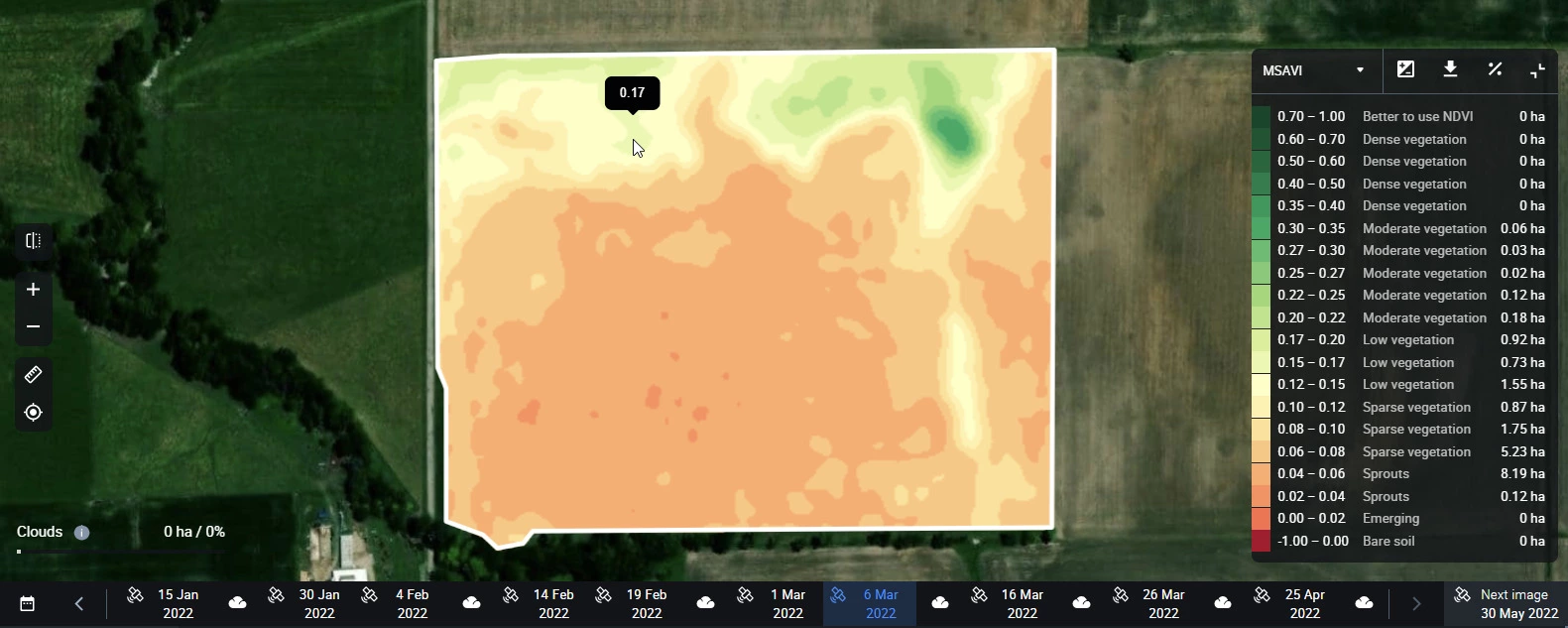
Weather Monitoring For Pasture Management
The most critical factor for effective grass pasture management is the weather. Satellite-based monitoring of weather helps reduce the entire operation’s risks. Using satellite crop monitoring, you can:
- monitor current temperature and rainfall;
- detect weather trends based on historical data (EOSDA Crop Monitoring database contains information from 2008 onwards);
- plan the long-term development of the grazing.
Additionally, users of our pasture management app get a 14-day weather forecast for the region and automatic notifications of dangerous temperature changes.
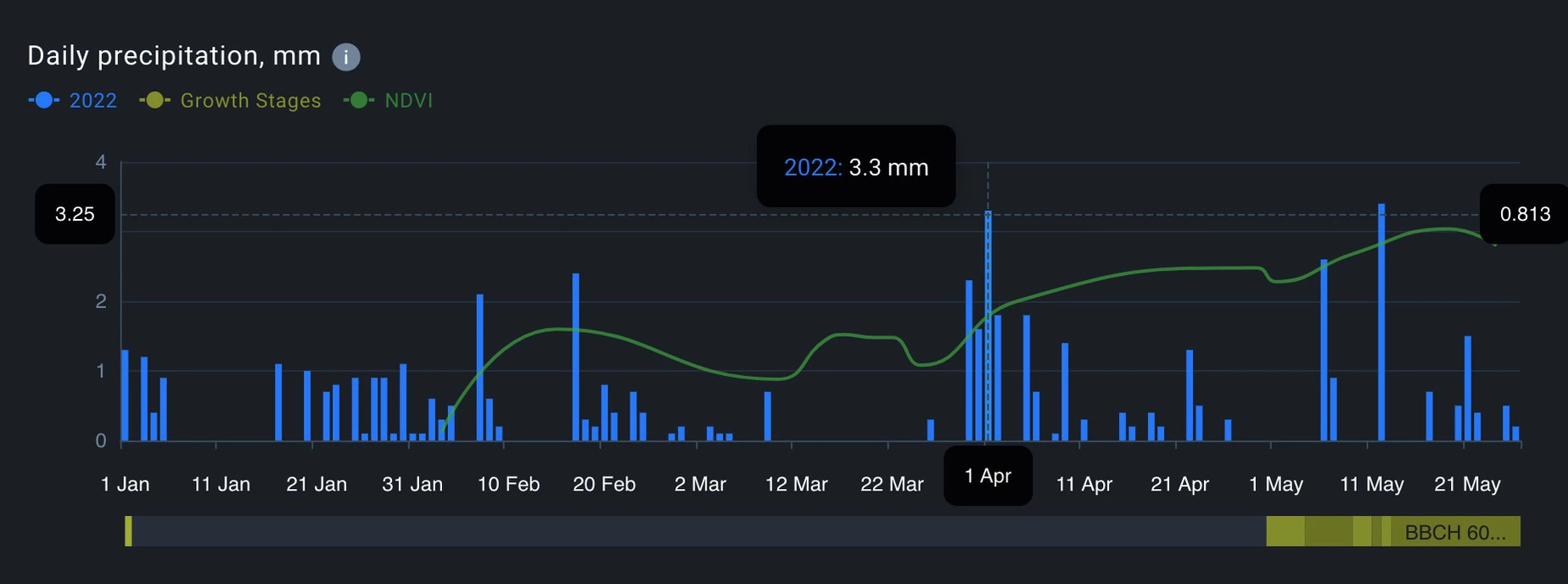
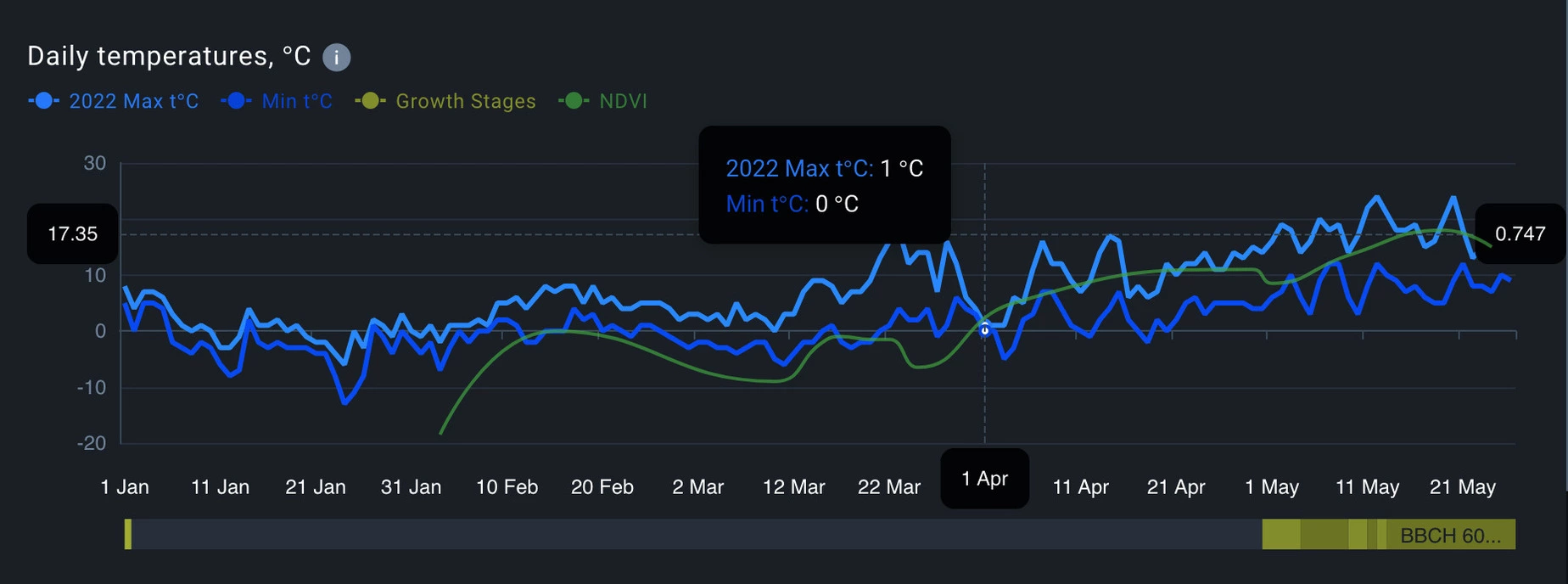
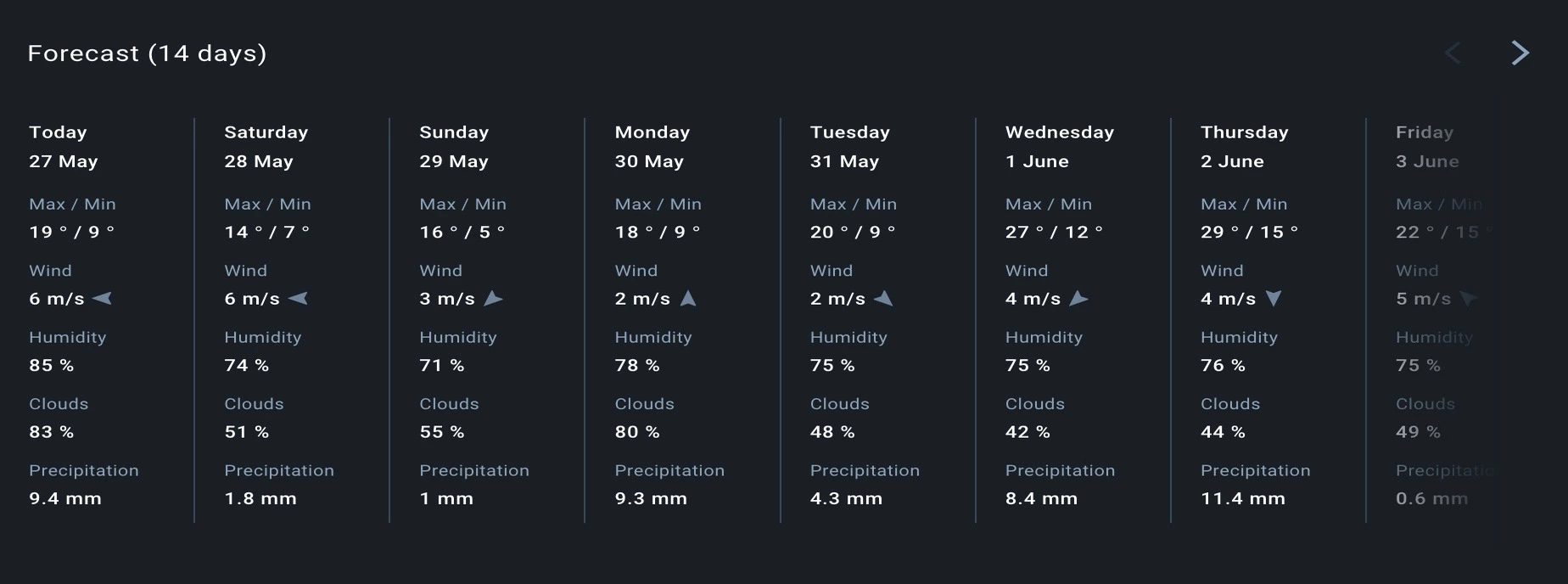
Control Of Large Grazing Territories
Monitoring large areas is incredibly challenging. It usually requires scouts, which entails additional financial costs. EOSDA Crop Monitoring optimizes this process by reducing the workload of scouts. As part of pasture management, you can use the Field Leaderboard feature to sort fields by the following criteria:
- vegetation level;
- types of crops planted;
- grassland size;
- custom conditions.
Also, with the NDVI pasture management tool, EOSDA Crop Monitoring timely identifies and reports critical vegetation decline.

Time-Effective Scouting
As mentioned above, using EOSDA Crop Monitoring as pasture management software, you can optimize the work of scouts. So, the Scouting tool allows you to assign tasks to specific field areas. It saves time and resources for analytical work. Scouts can also supplement their reports with photos from the pasture lands. Based on the data obtained, farmers can, for example, draw up an effective plan for herbicide treatment of the area.
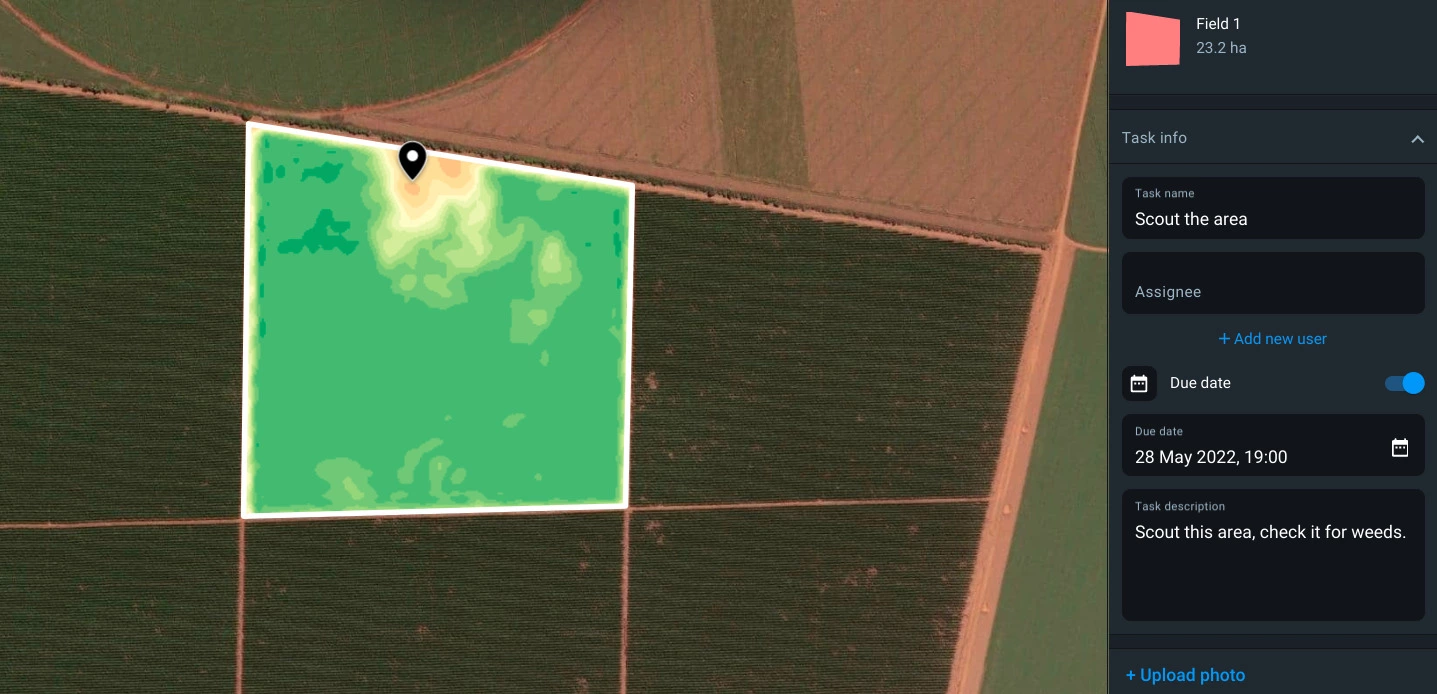
So, by using EOSDA Crop Monitoring tools for pasture management, it’s possible to increase the efficiency of the entire production process significantly.
Sustainable Grassland Management
In pasture management, it is vital to maintain the ecosystem’s health. A competent system increases plant productivity and diversity and improves water and air quality. These measures positively affect soil health: the risk of erosion is reduced, and more nutrients are supplied to the soil. Proper pasture management for cattle promotes an even distribution of animal manure, giving an additional flow of nutrients that can be used several times during the season.
Thus, pasture management increases plant productivity, promotes animal health, and improves farm profitability. Pasture management apps like EOSDA Crop Monitoring can optimize this process to achieve even better results.
About the author:
Vasyl Cherlinka is a Doctor of Biosciences specializing in pedology (soil science), with 30 years of experience in the field. He attended the engineering college in Ukraine and received his degree in agrochemistry, agronomy and soil science in the Chernivtsi National University. Since 2018, Dr. Cherlinka has been advising EOSDA on problems in soil science, agronomy, and agrochemistry.
Recent articles

Analyze 2025 & Plan Your Best Year Yet: LandViewer Christmas Offer
It’s the most wonderful time of the year! The Christmas holidays are here, and so is your chance to analyze 2025 and plan a prosperous 2026 with more affordable Pro plans in LandViewer.

EOSDA Models Climate Change Impact On Sugarcane Yields
EOSDA modeled future temperature, rainfall, and other climate impacts on Veracruz sugarcane. The results help growers plan long-term adaptation strategies, including timing, varieties, and irrigation.

EOSDA LandViewer Black Friday Sale: Exclusive Offers & Giveaway
This Black Friday, LandViewer offers new users the chance to save on monthly plans, get extra months with yearly subscriptions, and participate in a free annual plan giveaway.